Are you navigating the complexities of obtaining a temporary occupancy permit for your construction project? Understanding the ins and outs of the process can make all the difference in ensuring your project stays on track. In this article, we'll break down the essential elements of a contractor's letter template that you can use to communicate effectively with local authorities. So grab a cup of coffee, and let's dive in to simplify this process together!
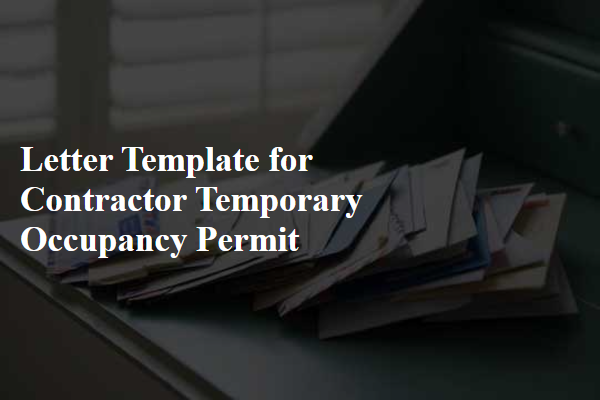
Project Description
The temporary occupancy permit (TOP) for the downtown mixed-use development project, located at 123 Main Street, is essential for allowing limited access to the building before final inspections are completed. This project includes features such as 150 residential units, 20,000 square feet of retail space, and a rooftop garden that spans 5,000 square feet. Construction began in January 2023 with an anticipated completion date in December 2023. The purpose of the TOP is to facilitate early tenant move-ins and retail operations, ensuring compliance with safety regulations from local authorities, such as the City Building Department. Key safety measures, including fire alarm systems and emergency exits, have been installed and tested to meet the required standards, enabling safe access for future occupants while final touches are completed on the remaining sections of the building.
Contractor's Information
Contractors operating within the construction industry need to be aware of legal requirements regarding temporary occupancy permits for projects such as residential homes or commercial buildings. A temporary occupancy permit allows partial or full access to a structure before final completion, ensuring compliance with municipal codes and safety regulations. In cities like Los Angeles or New York, contractors must submit an application that includes essential contractor information, such as company name, license number, contact details, and project address. Additionally, contractors must provide details about the scope of work, anticipated completion date, and any inspections conducted by local authorities. Proper documentation facilitates the approval process and ensures both contractor and occupant adherence to safety standards.
Duration of Occupancy
The temporary occupancy permit (TOP) is a critical document that allows contractors and construction teams to begin using a building or portion of a building before the final certificate of occupancy is issued. This permit is typically granted for a specified duration, often ranging from a few days to several months, depending on local regulations (such as those established by city planning departments). During this period, the contractor must ensure all safety codes and regulations are met to protect workers and the public. Key inspections, such as those for electrical systems, plumbing installations, and structural integrity, must be completed and approved to maintain the validity of the permit. The duration of occupancy is crucial because it dictates the timeline for ongoing construction activities and the project's overall delivery schedule. Failing to comply with the terms stipulated in the temporary occupancy permit can result in penalties or revocation of the permit, potentially delaying project completion and occupancy by future tenants.
Safety and Compliance Requirements
A temporary occupancy permit (TOP) is essential for contractors like general contractors or subcontractors wanting to occupy a construction site legally. Compliance with safety regulations such as OSHA standards is mandatory. Ensuring all safety equipment like hard hats (with ANSI certifications) and harnesses (meeting OSHA regulations) is present on-site is critical. Additionally, having proper signage indicating hazards such as electrical risks or falling object zones is necessary for worker safety. Routine inspections must be conducted to verify that fire safety measures, including fire extinguishers (rated for specific classes of fire), are adequately placed and accessible. Lastly, maintaining adequate ventilation systems is required to minimize exposure to harmful fumes, especially during activities like painting or welding.
Contact Information for Inquiries
A temporary occupancy permit (TOP) allows construction projects, including residential and commercial buildings, to be partially occupied before full completion. This process typically occurs after a thorough inspection by local authority officials to ensure safety compliance. The issuing agency, often a city or county building department, requires contact information for specific inquiries related to outstanding construction details, occupancy issues, and necessary safety measures. Common contact points include the permit supervisor, project manager, and inspections department, usually including phone numbers and email addresses for direct communication. Ensuring accessibility to this information helps streamline the inquiry process and facilitates efficient communication during the permitting phase.
Letter Template For Contractor Temporary Occupancy Permit Samples
Letter template of Application for Temporary Occupancy Permit for Contractors
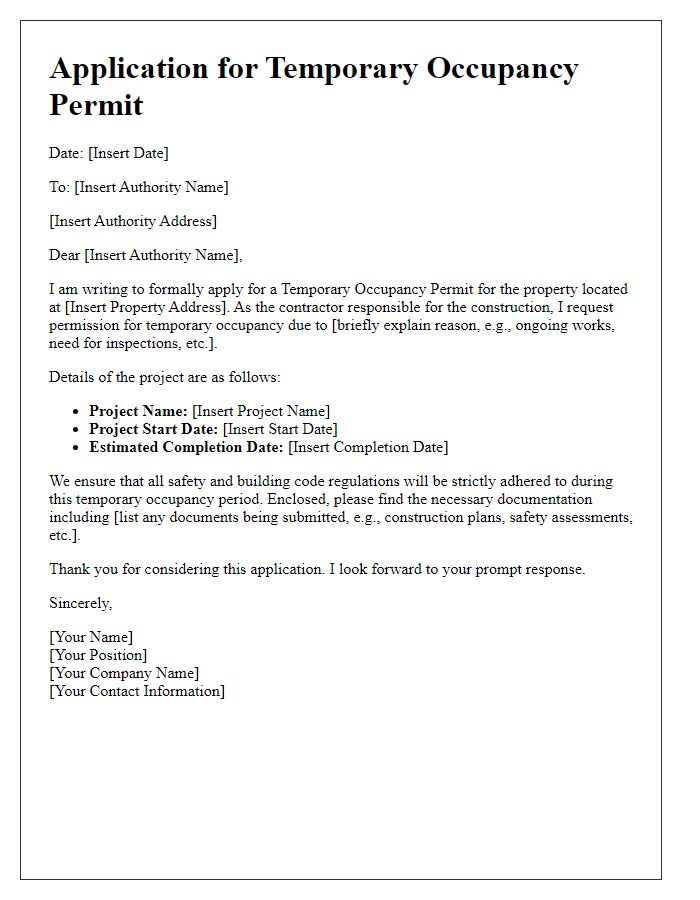
Letter template of Notification for Contractor Temporary Occupancy Permit
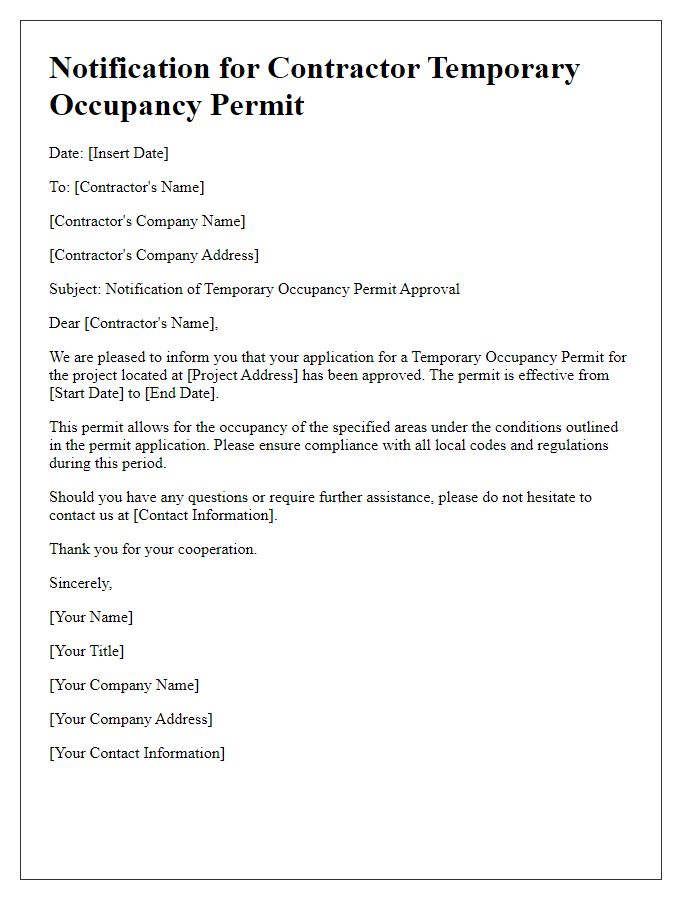
Letter template of Appeal for Temporary Occupancy Permit for Contractors
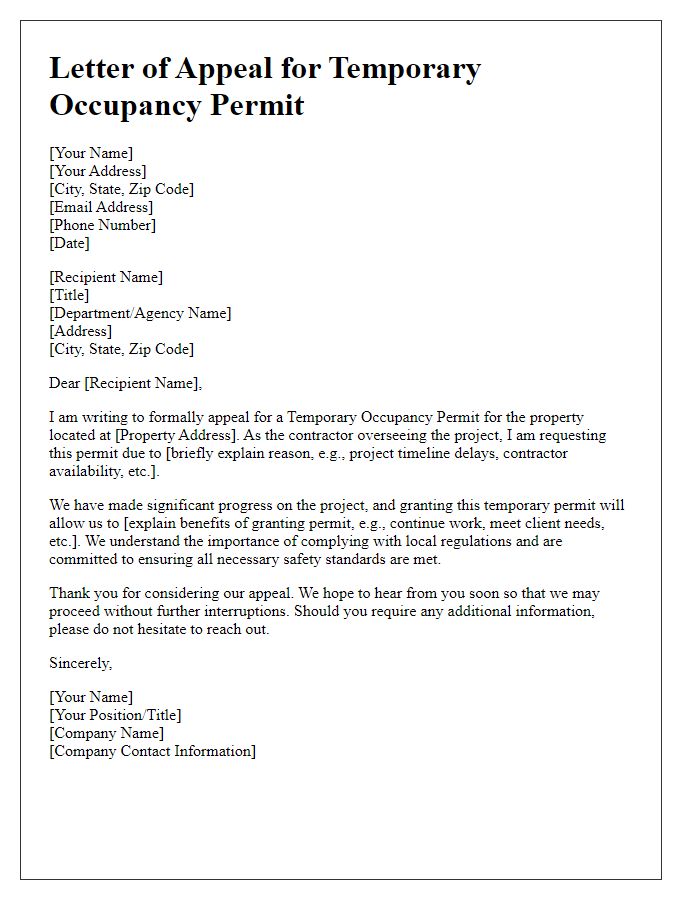
Letter template of Confirmation for Contractor's Temporary Occupancy Permit

Letter template of Update on Contractor Temporary Occupancy Permit Status
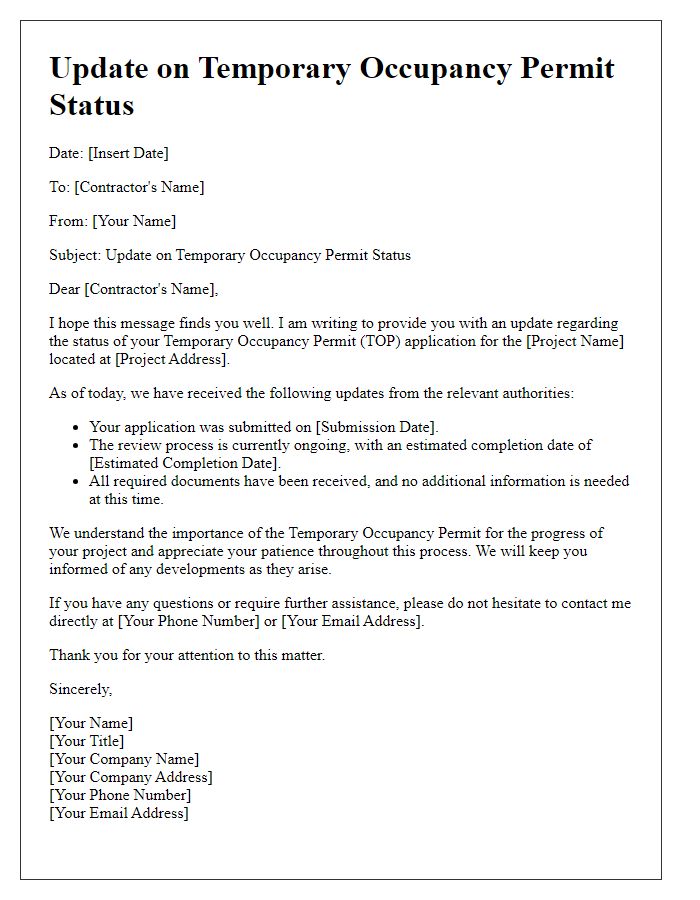
Letter template of Cancellation of Contractor Temporary Occupancy Permit Request
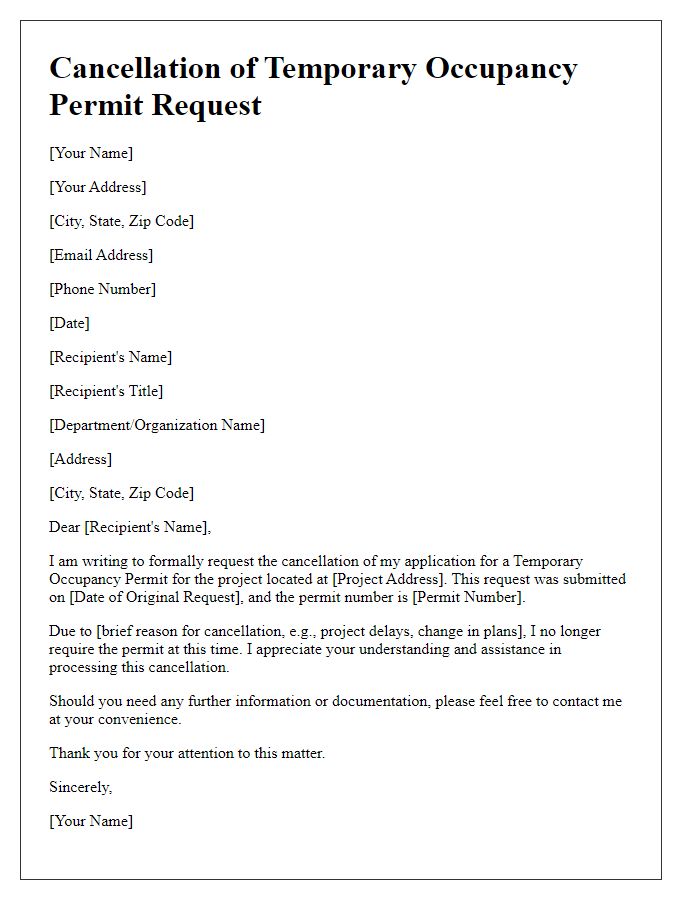

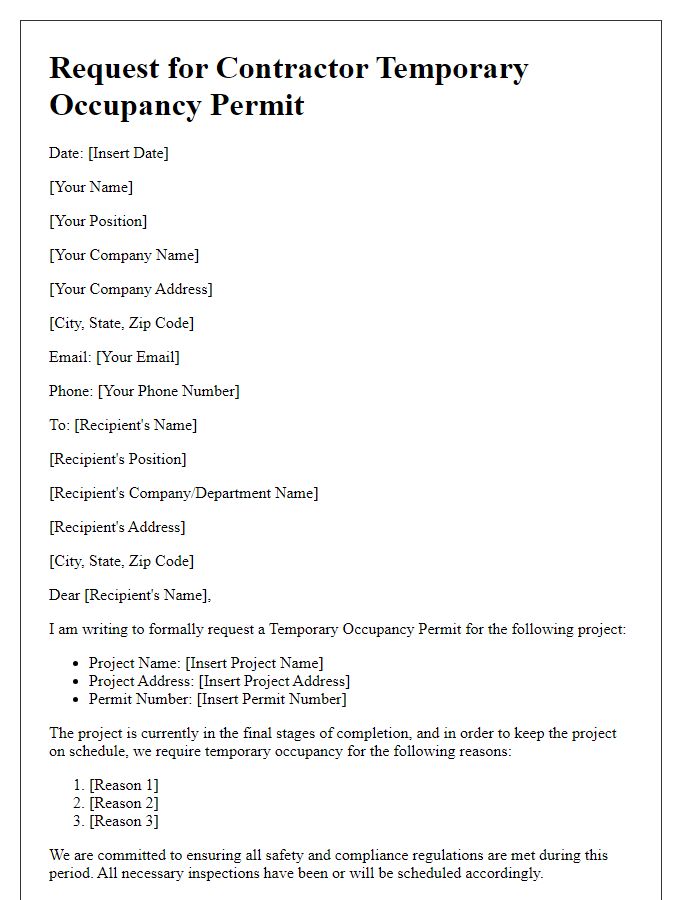
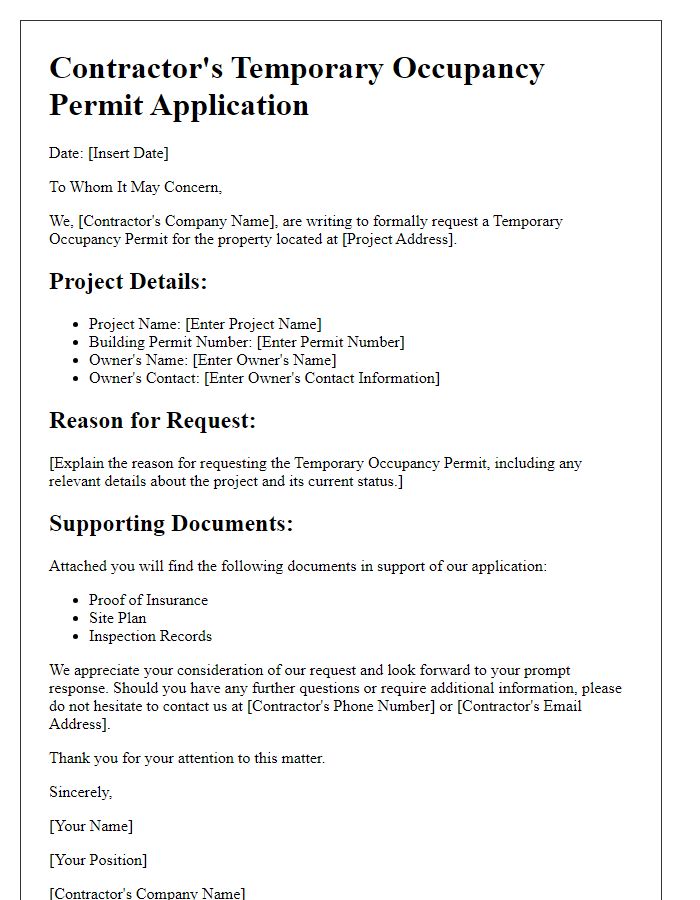
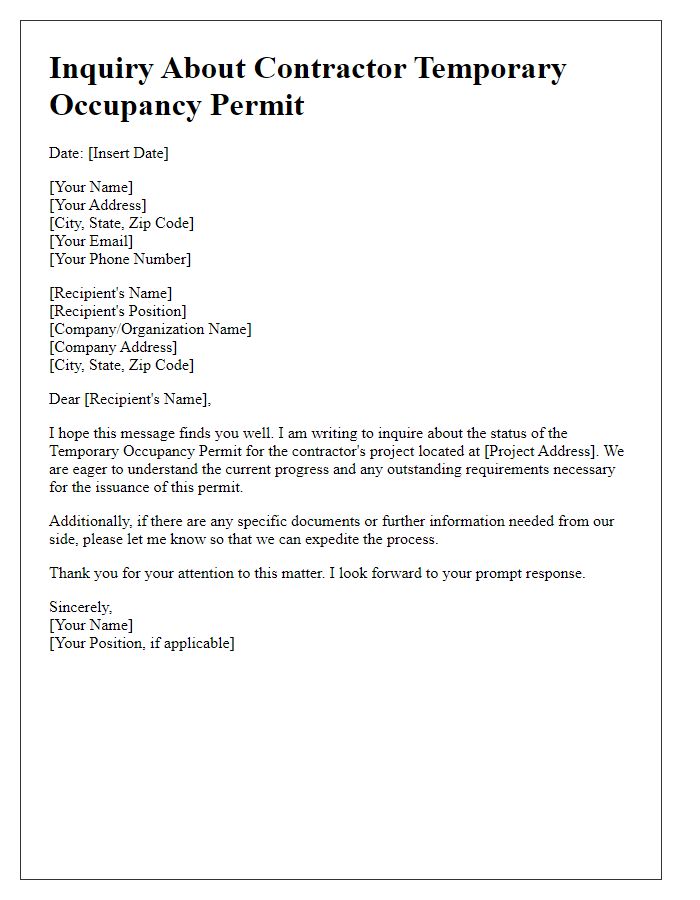
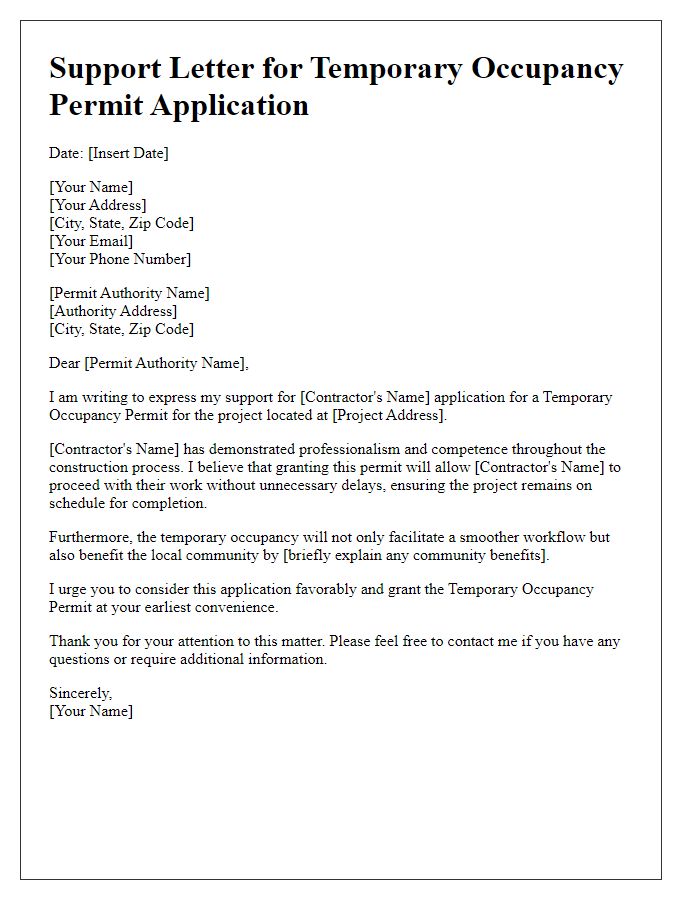


Comments